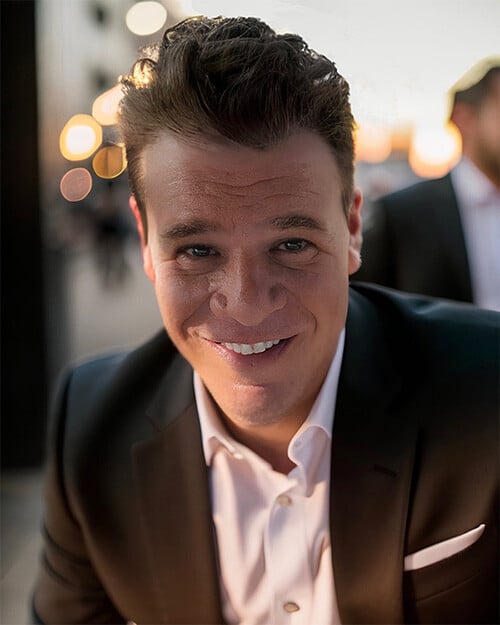Whenever a litigation team presents a document in a graphic way to the jury or other fact-finder at trial, there is an occasion for a document call-out. A “document call-out” is a term of art that means taking a document that is in evidence at trial and highlighting some key portion of it for easy reading and to draw the viewer's attention to the key language.
The Litigation Consulting Report
Kenneth J. Lopez, J.D.

In 1995, he founded his first company, A2L Consulting, where he served as its President/CEO for nearly 25 years. A2L provided litigation support services to all of the nation’s top law firms and their clients around the world. Often called upon when the dollars at stake are high, A2L’s services included helping to predict how judges and juries will react to a case (i.e., jury consulting and mock trials), the creation of sophisticated visual evidence used to persuade judges and juries (i.e., litigation graphics and 3D animation), and the deployment and use of state-of-the-art technology in the courtroom (i.e., hotseaters and trial technicians).
Ken launched LawProspecter in 2007, a first-of-its-kind software company that provided information about litigation and who was involved in it. In 2020, Ken launched OurHistoryMuseum, a crowdsourced history museum, which he continues to run.
Bestselling business author Dan Pink highlighted A2L in his book, A Whole New Mind: Why Right-Brainers Will Rule the Future, and Ken has been quoted by many news outlets including the Wall Street Journal, Inc., NBC News, Wired, the Washington Post, and the BBC.
Recently, the readers of LegalTimes voted A2L “best jury consultants” and “best trial consultants,” and readers of the National Law Journal voted A2L “Best Demonstrative Evidence provider” in the country. Many other publications have held similar votes and ranked A2L at the top of a key category. The American Bar Association named A2L’s blog, where Ken and his colleagues publish weekly, one of the top 100 blogs in the legal industry and one of the top 10 litigation blogs.
In 2013, Virginia’s Governor appointed Ken to a four-year term on the University of Mary Washington’s Board of Visitors. He has also served on the Dean’s National Advisory Board of Delaware Law School and various local and business boards and advisory groups.
In 2023 Ken launched Persuadius, a litigation consulting company that has picked up where A2L left off.
Despite an interesting and varied career, Ken still lists his top passion and proudest accomplishment as “father of triplet girls born in 2008.”
You can reach Ken Lopez at ken@persuadius.com or 800.847.9330
Recent Posts
We have previously discussed how valuable timelines used as legal graphics can be in the presentation of facts at trial. As we have noted, most cases involve the placing of events along some sort of time sequence, and timelines, if they are well designed, can give jurors a straightforward introduction to the facts of a case. In fact, we recently released an e-book describing best practices for the use of timelines and legal graphics at trial.
Share:
Indata's Trial Director has become the dominant trial presentation specialty software, second only to PowerPoint in courtroom use. It is a powerful tool that is available to trial lawyers and to litigation consultants and represents the state of the art.
Share:
The old-fashioned deposition, with the court reporter recording every word and producing a written transcript, is giving way to the video deposition, which permits a jury and judge to actually see the witness and get a feeling for his or her style and credibility that can’t be obtained by looking at a printed page. In addition, the witness’s body language, which was completely opaque in a written deposition, is now available to the jury.
Share:
A recent study about the best use of litigation graphics during trial reveals some new insights. This study was conducted by Persuasion Strategies, a litigation consulting firm that is part of Holland & Hart, a law firm. The study team was led by Ken Broda-Bahm, a leader in the art of visual presentation in the courtroom. With a doctorate in speech communication that emphasizes rhetoric and legal communication, Dr. Broda-Bahm is a genuine expert in jury consulting.
Share:
by Ken Lopez The task of a trial lawyer is to convince a judge or jury to believe in the truth of a client’s case. However, in many complex trials, the underlying facts are not as easily understood by the fact-finder as they would be in, say, a murder case or a traffic accident. A case, especially the type of litigation that we are involved in, often turns on complex issues of science, medicine, engineering, or some other subject that jurors and many judges are not well versed in.
Share:
Because maps are used by jurors constantly in their daily life and because they are so frequently used to represent common locations and processes, they are one of the most frequently used and most effective types of demonstrative evidence. Whenever something can be conveyed geographically, through the use of space, it is worth considering the use of a map. Even though maps don’t always represent the highest and newest technology, their importance cannot be underestimated. In the words of Ray Moses of the Center for Criminal Justice Advocacy, which was formed in Texas as a grass-roots training resource to help new lawyers in becoming competent criminal trial practitioners: “Visuals (graphics) such as time lines, charts, illustrations, maps, etc. are sufficiently important to communicating your message that you owe it to your client and yourself to learn how to incorporate visuals into your presentation.”
Share:
In most trial presentations, the trial timeline is often the single most critical demonstrative exhibit used at trial. Much like an effective opening statement, the trial timeline: Orients the viewer; Provides a framework around which facts can be organized; Allows for easy comparison of events occurring in sequence or simultaneously; Builds trust and credibility by sharing a believable story; and even persuades when built correctly.
Share:
We often hear from clients or prospective clients that it won’t help them if they look like a big company that is attempting to overwhelm or dazzle its opponents with technology. Jurors won’t buy that sort of stuff, we are told, even from a litigant that is actually a large company.
Share:
by Ken Lopez In the courtroom, the attorney who has the best chance of winning a case is generally the one who is the best storyteller. The trial lawyer who makes the audience care, who is believable, who most clearly explains the case, who develops compelling narrative and who communicates the facts in the most memorable way builds trust and credibility.
Share:
Pharmaceutical companies can be embroiled in many types of litigation. Very often, because of the length of time and the tremendous investment of money that it takes to develop a new drug and bring it to market, these cases can be crucial to the company’s continuing financial health.
Share:
Litigation involving architecture usually involves some failure in the construction process, a dispute over lease terms like sight lines or common areas, an insurance claim involving an allegedly negligent design, or the responsibility for a building damaged in a natural disaster. Since most jurors are familiar with architecture to some degree, what usually has to be explained is the legal meaning of seemingly everyday terms, the process of design and construction, or the common customs of the architectural and construction businesses. That's where legal graphics often enter the picture.
Share:
About
Persuadius (formerly A2L Consulting) has extensive experience in complex litigation. For over twenty-five years, we have worked with all top law firms on more than 10,000 matters with at least $2 trillion cumulatively at stake. Persuadius (as A2L) is regularly voted best jury consultants, best trial consultants, and best litigation graphics consultants.
Recent Tweets
Subscribe To Our Blog
Contact
Connect
© Persuadius 1995-2026, All Rights Reserved.
Nationwide Contact: 1-800-847-9330



Share: